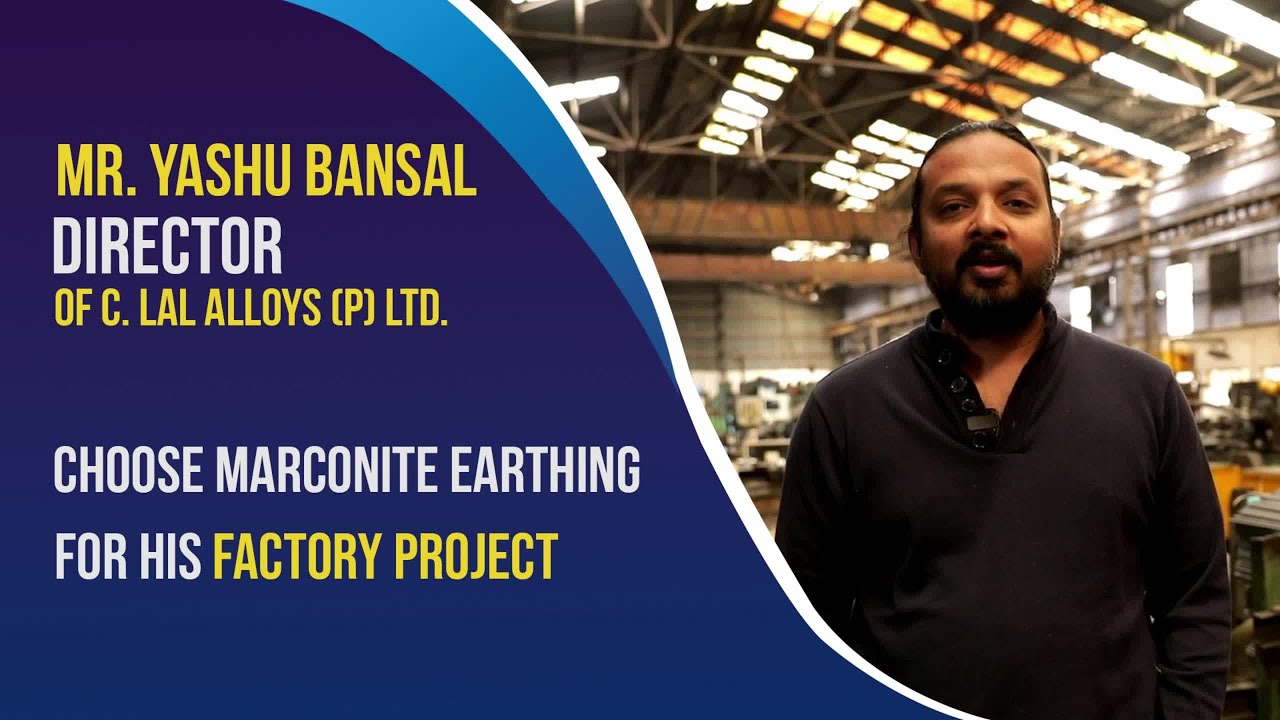In the world of industrialization, diesel generators (DG Sets) have emerged as invaluable assets for manufacturing establishments & processing plants, especially when confronted with unforeseen power disruptions. DG sets help in ensuring uninterrupted operations of the unit.
But one essential aspect of protection that is often overlooked is earthing. Proper earthing for diesel generators is crucial to ensure the safe, efficient & accident-free operations of the DG sets.
Why is Earthing Essential for Diesel Generators?
Proper earthing is essential for DG sets due to several reasons. Firstly, it ensures the safety of the operators and personnel working with the DG set. Electrical faults can occur at any time and without warning. Without proper earthing, these faults can lead to electric shocks, which can be fatal.
Proper Electrical Earthing provides a low-resistance path for the fault current to flow into the ground, protecting individuals from harm.
When an electrical fault occurs, the excess current needs to flow into the ground to avoid damage to the equipment. Without proper earthing, the fault current may flow through other parts of the system, causing damage to sensitive components such as alternators, control panels, and voltage regulators. This can result in costly repairs and downtime.
Lastly, earthing is essential for fire safety. Electrical faults can generate heat, and if not dissipated properly, they can lead to electrical fires. Proper earthing helps to dissipate the fault current safely into the ground, reducing the risk of fire hazards.

The Dangers of Improper Earthing in DG Sets
Improper earthing in DG sets can have severe consequences. One of the main dangers is the risk of electrical shock. Without a proper earthing system, any leakage current can potentially flow through the equipment casing, resulting in an electric shock to anyone who comes into contact with it. This poses a significant risk to both operators and maintenance personnel endangering their lives.
Another danger is the potential damage to equipment. When an electrical fault occurs, the excess current needs to be safely discharged into the ground. Without proper earthing, the fault current may flow through the equipment, causing damage to sensitive components and increasing the risk of electrical fires. This can lead to costly repairs and downtime, affecting the overall productivity and efficiency of the DG set.
Furthermore, improper earthing can create a hazardous environment. In the absence of a proper earthing system, stray currents can find their way into nearby metallic structures, such as pipelines or buildings which also can be harmful and fatal.
 Types of Earthing Systems for Diesel Generators
Types of Earthing Systems for Diesel Generators
There are several types of earthing systems used for DG sets, each with its advantages and disadvantages. The choice of earthing system depends on factors such as the voltage level, the type of electrical equipment, and the specific requirements of the electrical system.
Marconite earthing is the most effective earthing system for the substation.
• Marconite is an environmentally friendly sustainable earthing system that can work on any type of soil.
• Once installed it requires practically zero maintenance and it does not require any water or chemical recharge throughout its life cycle of 25+ years.
• Marconite earthing provides a low resistance path to the faulty current into the earth making it the world’s best earthing system.
• The resistance value, once achieved, remains stable throughout its life cycle.
• We also provide mobile earthing solutions, where one can carry the earthing system along with the generator for earthing anytime anywhere solution. For more information contact us:
Step-by-Step Guide to Implementing Proper Earthing for DG Sets
Implementing proper earthing for DG sets involves several steps to ensure the effectiveness and safety of the system. Here is a step-by-step guide to implementing proper earthing:
1. Site Survey: Conduct a thorough site survey to assess the soil conditions, nearby structures, and any potential sources of interference. This will help determine the most suitable type of earthing system for the DG set.
2. Earthing System Design and Planning: Based on the site survey, design an earthing system that meets the specific requirements of the DG set. This includes determining the size and type of earthing electrodes, selecting the appropriate conductor size, and planning the layout of the earthing system.
3. Installation: Install the earthing electrodes, conductors, and other components according to the designed layout. Ensure that all connections are properly made and securely fastened.
One must follow the manufacturer’s guidelines and local electrical codes during the installation process.
4. Earthing Testing and Verification: After the installation, perform testing and verification to ensure the effectiveness of the earthing system. This includes conducting resistance tests & continuity tests to verify the integrity of the system.
5. Maintenance and Inspection: Regularly maintain and inspect the earthing system to ensure its continued effectiveness. This includes checking for any signs of damage, corrosion, or loose connections. Clean the electrodes if necessary and perform periodic tests to ensure the system’s compliance with safety standards.
 Common Misconceptions about Earthing For Diesel Generators
Common Misconceptions about Earthing For Diesel Generators
There are several common misconceptions about earthing in DG sets that need to be addressed:
1. Myth: Earthing is not necessary for DG sets reality: Proper earthing is essential for the safety and efficient operation of DG sets. It protects against electrical shocks, equipment damage, and fire hazards.
2. Myth: Any type of metal can be used for earthing reality: Only specific metals, such as copper or galvanized iron, should be used for earthing to ensure low resistance and longevity.
3. Myth: Once installed, earthing systems do not require maintenance Reality: Earthing systems should be regularly maintained and inspected to ensure their continued effectiveness. Loose connections, corrosion, and damage can affect the performance of the system.
4. Myth: Earthing is a one-time process Reality: Earthing should be considered an ongoing process. Changes in soil conditions, equipment upgrades, or alterations to the electrical system may require modifications to the earthing system. However if one uses the Marconite Earthing System which is a lifetime solution for earthing.
Conclusion:
In conclusion, proper earthing is an essential aspect of protecting DG sets. It ensures the safety of personnel, and the proper functioning of equipment, and reduces the risk of electrical accidents and fires.
By implementing and maintaining a robust earthing system, DG set operators can ensure the reliability and longevity of their equipment while prioritizing the safety of all involved.







